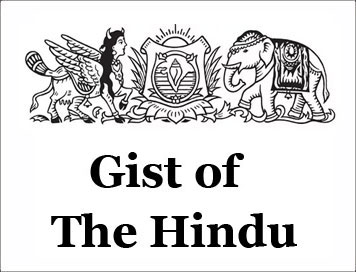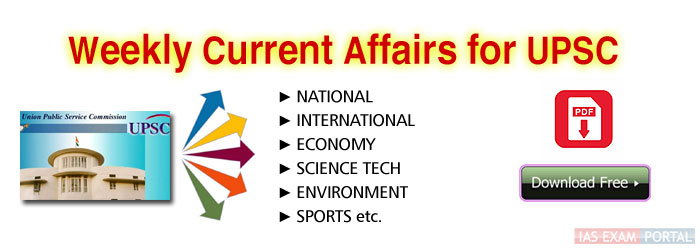
Sample Material of Current Public Administration Magazine
1. Accountability and Control
State Financing of Poll Funding
In just 28 days since the announcement of the general election, the Election
Commission (EC) has seized cash, drugs, alcohol, precious metals and other items
worth Rs 1,800 crore. Compare this to the legal upper limit of expenditure per
candidate — Rs 70 lakh. Simple arithmetic would show that the seized amount can
fully finance up to five candidates from each of the 543 constituencies. The
amount seized is just the tip of the iceberg. The expenditure in any election is
estimated to be several times the legal upper limit.
Fiscal constraints on electioneering give rise to the problem of unaccounted
money. There have been a few solutions. However, all of them are premised on an
adverse relationship between accountability and transparency. Alternately, state
funding of the recognised political parties and outlawing of corporate funding
could be instrumental in making the electoral process fairer and more
participatory.
In 1962, the late Atal Bihari Vajpayee moved a Private Member’s Bill to
prevent electoral donations by corporates. It was argued that since all
shareholders need not subscribe to the political endorsement by a corporate, it
was immoral to allow donations against their consent. Vajpayee had propositioned
that such funding would only serve corporate interests. While all political
parties welcomed the bill, the then ruling party did not vote in its favour.
Never again was such a bill introduced.
<< Read More >>
2. Indian Government and Politics
Article 35A
When the minions of the BJP promise abolition of Article 370 or Article 35A,
especially prior to the elections, it is not to be taken seriously. In fact, the
response, if any, should be to dare them to do it. Indeed, I had done so in 2014
in response to a rant by Jitendra Singh, a minister in the PMO, when he spoke
out of turn (‘Dare them to do it!’, Kashmir Life, June 2, 2014). It has been
almost five years since and Article 370 and 35A stand where they are even as
Singh is sitting in the same chair!
But when an erudite political leader with the genteel and gravitas of Arun
Jaitley goes public on it, it needs to be taken very seriously. In a blog,
Jaitley has said that “Article 35 A was “surreptitiously” included in the Indian
Constitution, terming it as a “historical blunder” committed by Jawaharlal
Nehru.
One cannot pick a bone with Jaitley on his calling it a “historical blunder”.
That is an opinion based not only on an ideology but a certain understanding of
Indian history and a vision for Indian polity. But, the same cannot be said
about besmirching Article 35A as a deceitful entry in the Constitution of India.
Besides political, it has serious constitutional implications. It also makes the
Constitution of India appear as if it were contaminated.
<< Read More >>
3. Welfare Administration
Making Sense of NYAY
Guaranteed minimum income is a powerful idea that has already made some
headway in various countries. Some European countries, for instance, guarantee a
minimum income to their citizens. This requires extensive data collection as
well as an effective cadre of welfare officers and social workers tasked with
enquiring into the circumstances of people who claim to need income support.
It would be nice if India could achieve something similar, but the obstacles
are daunting. Starting with the financial burden, a recent brief of the World
Inequality Lab by Nitin Bharti and Lucas Chancel presents some useful figures.
The authors essentially estimate the “minimum-income gap”, that is, the gap
between minimum income and actual income summed over all households with actual
income below the minimum. With a minimum income of Rs 72,000 per year, the gap
turns out to be 1.3 per cent of GDP. This information is helpful, but it does
not tell us much about what it would cost to guarantee a minimum income of Rs
72,000 per year to everyone. All it says is that if this could be done through
perfectly targeted and costless top-up transfers, it would cost 1.3 per cent of
GDP.
<< Read More >>
4. Administrative Law
Police Reforms
Our newspapers, until recently, were full of BJP’s tagline “Namumkin Ab
Mumkin Hai”. There is no doubt that Prime Minister Narendra Modi has taken a
number of initiatives in diverse fields, which would raise the standard of
living of the common man and transform India into a cleaner, healthier and
resurgent nation. Swachch Bharat is gradually becoming a reality. Ayushman
Bharat aims to provide healthcare benefit to about 50 crore people. Electricity
would appear to have reached every corner of the country. Ujjwala and Sukanya
Yojana would go a long way in improving the plight of women, and so on.
Different departments came out with their lists of achievements. Even if we make
allowance for an element of exaggeration, these initiatives have been laudable
and the progress impressive.
<< Read More >>
5. Current Topic
The Politics of Information
An article in this publication, ‘The learning state: How information becomes
insight’ (IE, March 18), written by two economists, has made some important
points about “information”, but it is their perspective on “insight” that needs
to be challenged.
Designing, using and evaluating information systems is all about perception
and perspective. Information systems that might strengthen socio-economic
transformation, is contingent on the active participation of people. Digital
tools have proliferated over the last decade leaving millions out of the ambit
of meaningful participation. For instance, an MGNREGA worker is the primary
producer of information but she has no stake in its presentation and access.
This raises pertinent questions about transparency of what and for whom. The
citizen has been made transparent to the State and the market instead of the
other way around — Aadhaar is a powerful example of this. Rural workers and
pensioners have been coerced to migrate to the Aadhaar platform without their
explicit consent.
<< Read More >>






